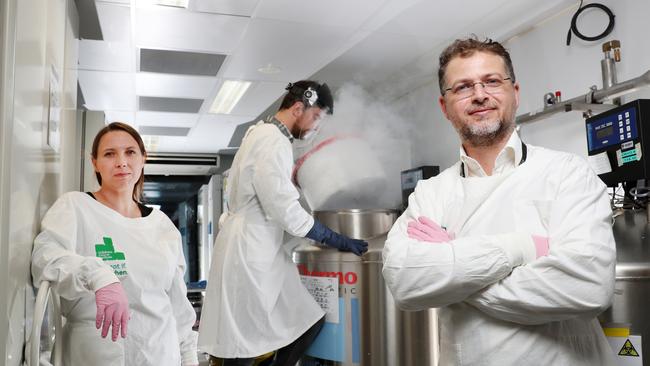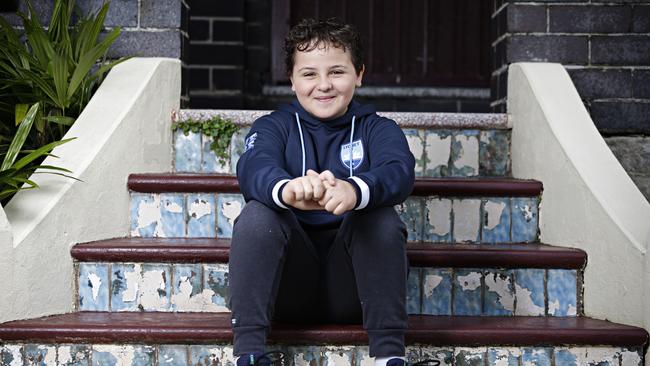Medical breakthrough in treatment of childhood brain cancer
It is the deadliest of childhood cancers, with a shocking survival rate. But a discovery by Australian researchers has found the illness could be destroyed by an already available drug.
Illness
Don't miss out on the headlines from Illness. Followed categories will be added to My News.
It is the deadliest of childhood cancers but a discovery by Australian researchers has found it could be destroyed by an already available drug.
Tests by researchers from the Children’s Cancer Institute at the University of NSW has found
a treatment called TETA shrank cancerous tumours in mice by an average of 40 per cent and doubled their lifespan.
The medication is affordable and already approved as safe for human use against a rare condition called Wilson’s Disease which causes people to store excess copper in their liver.
Dr Orazio Vittorio – whose findings will be published in the Cancer Research journal – said the drug could also help other cancer patients with solid tumours like breast cancer, pancreatic cancer and lung cancer.

His team studied tumour samples from more than 90 patients with neuroblastoma a deadly childhood cancer and 90 patients with gliomas, a type of brain cancer.
Neuroblastoma accounts for 15 per cent of total childhood cancer deaths and only 50 per cent of patients with high-risk neuroblastoma survive their disease.
Glioblastoma has the worst survival rate of all cancers, with only 5 per cent of patients surviving five years past their diagnosis.
The research found these cancers “feed” on copper, often having up to six times the normal levels of the metal inside the tumour cells.

The copper allows the cancer to make a protein called PD-L1 that hides the tumour from the body’s immune system, Dr Vittorio said.
“If you remove copper the tumour is not able to produce the protein anymore,” he said.
By doing this the research team “were able to make the tumour visible to the immune system and the immune system can attack the tumour,” he said.
A key advantage of the treatment is it comes in tablet form which means it is easier to use in small children than a treatment that needs to be injected.
It could also be used in combination with high cost immunotherapies for cancer and help them work better in the patients who don’t respond.
Dr Vittorio needs $3 million to carry out human clinical trials of the medication.
He said he hopes doctors at the Children’s Hospital in Sydney will consider using it as a compassionate treatment on children who have stopped responding to other medications.
“We had all the mice responding,” he said.
The testing was stopped before the cancer in the mice completely disappeared so the tumours could be tested.
Dr Vittorio is now planning longer tests in mice to determine whether it can completely cure the tumours if treatment is continued over a longer period and it will also be trialled in breast cancers.

Luciano Mazzucco was diagnosed with neuroblastoma when he was just 15 months old and spent a year undergoing gruelling chemotherapy and surgery that has put him at risk of secondary cancers and heart problems.
Luciano survived and now aged eleven is an enthusiastic soccer player who has annual check ups to make sure his cancer hasn’t returned.
His mother Maria said she would be happy to trial the new treatment if his cancer returned, “100 per cent”.
“I feel great about it. I’m really just happy about it that kids, or anyone could actually have a treatment that has got no side effects and it’s a tablet,” she said.
A fund-raising event for neuroblastoma called “Run to Cure” will be held on Father’s Day in the Domain. Participants run or walk 5 kilometres to raise money for research into the condition.
Originally published as Medical breakthrough in treatment of childhood brain cancer

